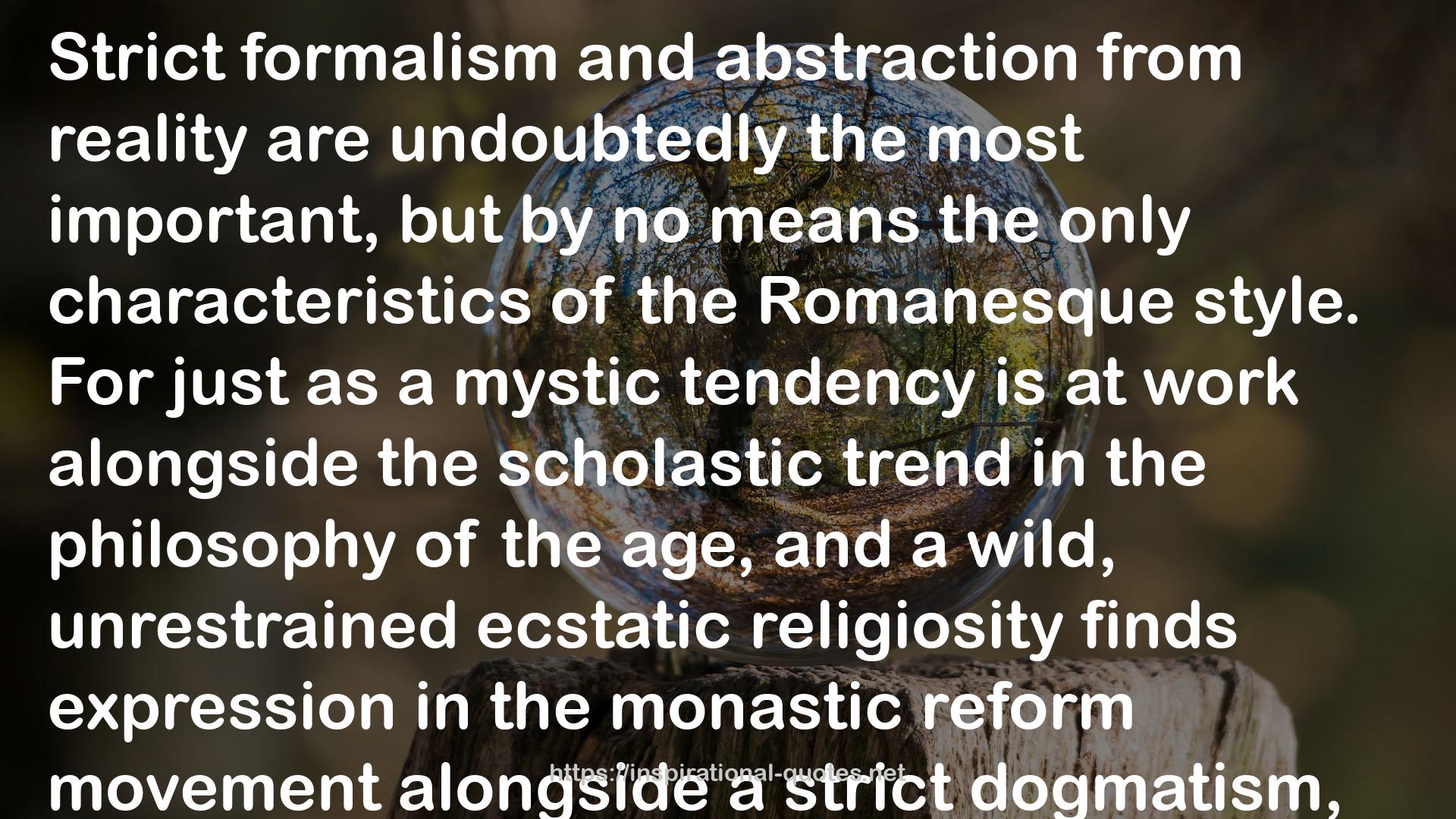" Strict formalism and abstraction from reality are undoubtedly the most important, but by no means the only characteristics of the Romanesque style. For just as a mystic tendency is at work alongside the scholastic trend in the philosophy of the age, and a wild, unrestrained ecstatic religiosity finds expression in the monastic reform movement alongside a strict dogmatism, so also in art emotional and expressionistic tendencies make themselves felt alongside the dominant formalism and stereotyped abstractionism. This less restrained conception of art is not perceptible, however, until the second half of the Romanesque period, that is to say, it coincides with the revival of trade and urban life in the eleventh century. However modest these beginnings are in themselves, they represent the first signs of a change which paves the way for the individualism and liberalism of the modern age. Externally nothing much is altered for the present; the basic tendency of Romanesque art remains anti-naturalistic and hieratic. And yet, if a first step towards the dissolution of the ties which restrict medieval life is to be discerned anywhere, then it is here, in this astonishingly prolific eleventh century, with its new towns and markets, its new orders and schools, the first crusade and the founding of the first Norman states, the beginnings of monumental Christian sculpture and the proto-forms of Gothic architecture. It cannot be a coincidence that all this new life and movement occurs at the same time as the early medieval self-supporting economy is beginning to yield to a mercantile economy after centuries of uninterrupted stagnation. "
― Arnold Hauser , The Social History of Art, Volume 1: From Prehistoric Times to the Middle Ages
